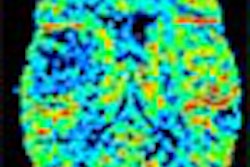VIENNA - With a post-processing time of 11 minutes, functional MRI (fMRI) is a reliable, time-saving way to plan neurosurgical intervention, said radiologists from the University of Leipzig in Germany.
"The indications for resection or biopsy of brain tumors are difficult [to determine]," said Dr. Claudia Dannenberg at a presentation at the European Congress of Radiology on Sunday. Dannenberg and her colleagues are from the university’s Klinik und Poliklinik für Diagnostische Radiologie.
For their study, 13 preoperative patients with cerebral tumors within or near the central sulcus were imaged with real-time fMRI. Thirteen healthy volunteers also were imaged for comparison. The active motor task fMRI exams were performed on a 1.5-tesla Magnetom Vision Plus (Siemens Medical Solutions, Iselin, NJ) with a head coil. The imaging protocol was as follows: echo-planar imaging (EPI) sequences (TR= 4s, TE=66 ms), 16 transverse slices, matrix 128 x 128.
For post-processing, the group used BOLD effect measurements with EPI sequences. "Additionally, we acquired T1-weighted anatomical SE reference images. The fMRI measurements were at four minutes," Dannenberg said.
Successful activation of the sensorimotor cortex was achieved in all 13 volunteers, and in 12 out of 13 patients. Imaging in one patient failed because of head motion artifacts.
"On the real-time images, it was possible to watch the fMRI success during activation," Dannenberg said. "Post-processing for further motion correction lasted 11 minutes. The activation level in the tumor-affected hemisphere was lower compared to the control group."
Neurosurgery was planned based on the distance of the tumor edema to the area activated on fMRI. As a result, tumor resection was possible in five patients, while nearly complete resection occurred in four patients. The remaining patients were not eligible for resection based on the imaging results.
Dannenberg said that future research would focus on the routine integration of pre-operative fMRI studies into neurosurgical navigation systems. Overcoming the obstacle of patient movement and reducing artifacts is another issue, she said.
By Shalmali Pal
AuntMinnie.com staff writer
March 4, 2001
Click here to post your comments about this story. Please include the headline of the article in your message.
Copyright © 2001 AuntMinnie.com


.fFmgij6Hin.png?auto=compress%2Cformat&fit=crop&h=100&q=70&w=100)





.fFmgij6Hin.png?auto=compress%2Cformat&fit=crop&h=167&q=70&w=250)











